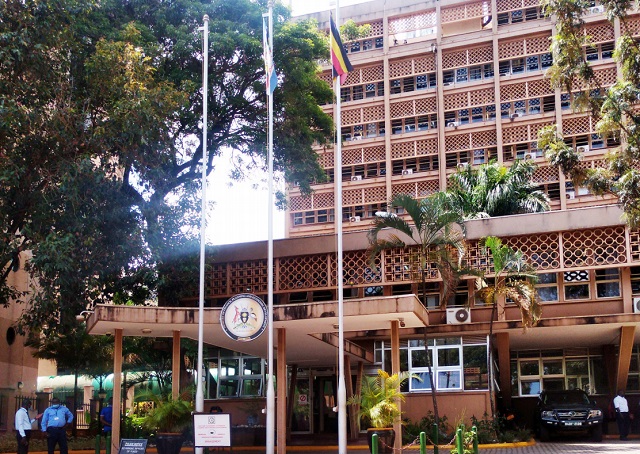
Can government respond to private sector needs amidst pressures related to COVID-19?
Kampala, Uganda | JULIUS BUSINGE | KK Foods, exporters of fresh foods and vegetables, enjoyed market opportunities in Europe, US and Canada until Covid-19 restrictions struck in March last year.
Export volumes dropped from 63 tonnes to 40 tonnes per week – far below the 100 tonnes during the pre-pandemic times.
James Kanyije, the CEO at KK Foods said the reduction in exports relates to COVID-19 market restrictions internationally, limited capital to deal with required investments to meet growing demand and quality standards.
“Markets like Canada and the United States of America are yet to re-admit imports of fresh foods and vegetables from Uganda since coronavirus lockdown measures were put in place,” he said.
Kanyije said to date, KK Foods is only feeding some markets in the European Union and England (Britain).
He said the other potential markets – Belgium, Netherlands and Germany are available but the company is unable to fully meet their demand.
“Capital is a big problem,” he told The Independent, adding that they are yet to receive government support in form of loans from the Uganda Development Bank saying ‘there’s no money.”
He also said, the government needs to drop the idea of borrowers from UDB staking collateral to access money since most of these businesses are known and have dealt with government before.
The challenges, that KK Foods faces, have forced the management to cut salaries of workers (mainly casual) instead of laying them off.
KK Foods predicaments are a reflection of the current economic conditions in the country as businesses strive to remain afloat amidst coronavirus pandemic.
Those managing the economy must step in with practical solutions to make things work for everyone, experts say.
Bank of Uganda, one of the frontline managers of the economy, on Feb.15, issued a monetary policy statement with mixed projections on performance of the economy.
Quarterly GDP growth is estimated to have declined by 2.2% in the first quarter of FY2020/21 and 6.3% in fourth quarter of FY2019/20. However, economic growth is gradually recovering and is expected to strengthen in the FY2021/22 with projected growth of 3.0-3.5% in FY2020/21, increasing to 4.0-4.5% in FY2021/22 and to 6.0-7.0% in the outer years.
This development comes at the time the Ministry of Finance officials, have drafted a Shs45.6trillion budget for FY2021/22 amidst shortfalls in domestic revenue collection by Uganda Revenue Authority.
A huge chunk of the money is to be borrowed locally and internationally, amidst growing concerns about the country’s ability to sustain debt servicing and crowding out of the private sector in the local market.
Top economists such as; Lawrence Bategeka say all efforts now must be geared towards stimulating demand across sectors which entails carefully handling private sector firms by not taxing to kill them.
Carefully spending by all players including government (the biggest player) should be targeted towards productive sectors like agriculture, industrial production, Bategeka says.
“We need to cut down on wasteful expenditures, check on corruption with serious commitments so that the little money there is goes to impact on social services,” he told The Independent in a recent interview.
Bank of Uganda has since last year signalled to the market a stable trend curve for interest rates by maintaining the policy interest rate – the Central Bank Rate at 7% – but there has not been significant moves by commercial banks to lower rates for borrowers to boost investments in the economy.
They [banks] too have been negatively hit by coronavirus pandemic restrictions and have remained cagy and risk averse while extending loans to the private sector – the main drivers of the economy.
Commercial banks’ lending rate on shilling loans averaged 18.8% in quarter to December 2020 down from 20.2% in quarter to September 2020 partly reflecting the lag in the monetary policy transmission mechanism, according to Bank of Uganda Monetary Policy Report for February released on Feb.15.
On a positive note, liquidity support measures put in place by the BoU in response to COVID-19 have continued to provide confidence to the market…two banks have so far accessed a total of Shs244billion through the Standing lending Facilities (SLF), according to BoU’s monetary policy report.
Banks to keep their lending rates stable
However, BoU says, majority of banks expect their lending rates to remain broadly unchanged with a bias towards decrease, reflecting a relatively lower Central Bank Rate (CBR).
BoU says, private sector credit by financial corporations (banks and UDB) grew by 10.2% in December 2020 up from 9.5% in the previous quarter supported partly by gradual economic recovery and lower cost of borrowing.
But it says, net extensions by banks picked up in the quarter to December 2020, although they are still below pre-COVID levels.
The value of loan applications and approvals increased to Shs4.9 trillion and Shs2.9 billion in the quarter to December 2020 from Shs4.2 trillion and Shs2.7billion in the quarter to September 2020 respectively.
“However, the continued build-up in net capitalized interest signals a default risk in the event that borrowers of restructured loans are unable to pay at the end of the moratorium,” BoU warns.
As at December 2020, total restructured loans amounted to Shs7.9 trillion of which, Shs4.8 trillion remains outstanding.
If economic activity does not pick up, there is a significant risk that past due restructured loans will progress to non-performing loans.
For now NPL levels are not worrying. Total NPLs as a share of total loans as at December 2020 is 5.3%, according to BoU.
 The Independent Uganda: You get the Truth we Pay the Price
The Independent Uganda: You get the Truth we Pay the Price



